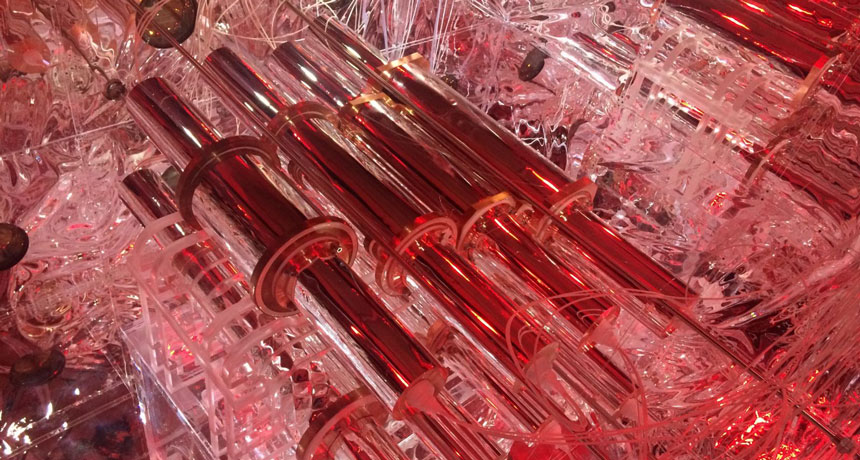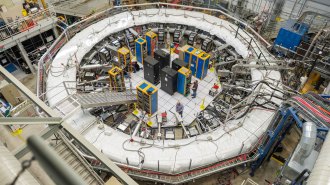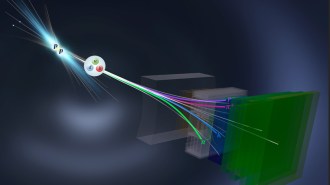A controversial sighting of dark matter is looking even shakier
The COSINE-100 experiment finds no evidence of the evasive subatomic particles

DAMA DRAMA The COSINE-100 dark matter detector (pictured) found no signs of the mysterious subatomic particles interacting in sodium iodide crystals, casting doubt on the earlier DAMA experiment.
Jay Hyun Jo
- More than 2 years ago
For years, some physicists have rowed against the tide, controversially claiming that they’ve found the universe’s elusive dark matter, despite mounting evidence to the contrary. A new experiment makes that upstream paddling even more of a challenge.
Observations of the cosmos indicate that an invisible, unknown type of subatomic particle must pervade the universe. The extra mass this dark matter provides is necessary to explain the motions of stars within galaxies and how matter clumps together in the universe. Despite a slew of experiments, no one has ever conclusively spotted the particles (SN: 11/12/16, p. 14).
The DAMA/LIBRA experiment, at Italy’s Gran Sasso National Laboratory near L’Aquila, is the one outlier; researchers there say that they have strong evidence that dark matter is interacting in their detector. Now an experiment called COSINE-100 has searched for the particles using the same type of detector as DAMA, and found no signs of dark matter, scientists report online December 5 in Nature.
“I think this is one more nail in the coffin,” says astrophysicist Dan Hooper of Fermilab in Batavia, Ill., who was not involved with the research. Earlier experiments using different types of detectors have likewise tried and failed to reproduce DAMA’s results.
Both DAMA and COSINE search for dark matter particles slamming into atomic nuclei in crystals of sodium iodide. If a collision occurs, it should produce a tiny flash of light in the crystal. But mundane interactions can produce similar flashes, like those caused by minute amounts of radioactive elements.
So the DAMA team monitored their crystals for years to tease out the purported dark matter signature. The researchers reported that the rate of collisions in the DAMA detector rises and falls with a specific annual pattern. That pattern, the argument goes, is the result of Earth’s motion through a stream of dark matter as the planet orbits the sun.
Some previous experiments have tested for the same type of yearly variation DAMA reports and found nothing (SN: 2/4/17, p. 15). The sticking point, however, was that those experiments were using a different detector material, rather than sodium iodide crystals. Now, by using the same detector material, “we’re going to take out any possible loophole as to why DAMA sees something,” says Yale University physicist Reina Maruyama, co-spokesperson of the COSINE-100 collaboration.
Instead of looking for annual variation, COSINE-100 researchers compared the rate of hits in their detector, located in the Yangyang Underground Laboratory in South Korea, with the number expected from known sources, such as radioactivity. The team found no sign of extra blips that could be from dark matter.
Still, DAMA researchers are sticking to their claims. Physicist Rita Bernabei of the University of Rome Tor Vergata wrote in an e-mail, “COSINE-100 has no impact on the long-standing results obtained with the DAMA setups.”
Performing an experiment made with the same material as DAMA is important, says Katherine Freese of the University of Michigan in Ann Arbor. “The fact that they’ve got a working sodium iodide detector is huge.” But, Freese says, what’s really needed to check DAMA’s claims is for COSINE to search for an annual change.
Maruyama agrees that COSINE’s job is not finished. The annual variation search is in the works, she says.







